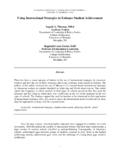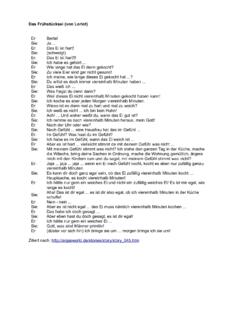Transcription of HOMEOSTASIS: POSITIVE AND NEGATIVE FEEDBACK …
1 HOMEOSTASIS: POSITIVEANDNEGATIVEFEEDBACKMECHANISMH omeostasisrefers to the maintenance of relatively constant internal conditions. For example, your body shivers to maintain a relatively constant body temperature when the external environment gets colder. To maintain homeostasis, your body adapts two types of FEEDBACK mechanisms: NEGATIVE feedbackoccurs when a change in a variable triggers a response which reversesthe initial change. POSITIVE feedbackoccurs when a change in a variable triggers a response which causes more change in the same POSITIVE FEEDBACK can be explained by an example. When you have a cut on your finger, POSITIVE FEEDBACK contributes to the rapid formation of a platelet plug in an injured blood vessel. The injured area attracts platelets, and each of these platelets secretes chemicals that attract more platelets.
2 Thus, many platelets accumulate quickly and together these platelets plug the hole in the injured blood vessel and prevent excessive blood loss. The process is shown in the picture Your body responds to hot and cold environments, and these responses help you to keep your body temperature from rising too high, and falling too low respectively. These body responses are an example of NEGATIVE FEEDBACK . NEGATIVE feedbackoccurs when a change in a regulated variabletriggers a response which reverses the initial change and brings the regulated variable back to theset point. This flowchart shows NEGATIVE FEEDBACK regulation of temperature in a home with central heating and air-conditioning. NEGATIVE FEEDBACK maintains the regulated variable (room temperature) relatively constant at approximately the set point (20 C).
3 The experiment provided will help you better understand about the NEGATIVE FEEDBACK Ingrid Waldron, Lori Spindler and Jennifer Doherty (2016). Homeostasis and NEGATIVE FEEDBACK -Concepts and Breathing Experiments, Deptof Biology, University of Pennsylvania. Retrieved from















